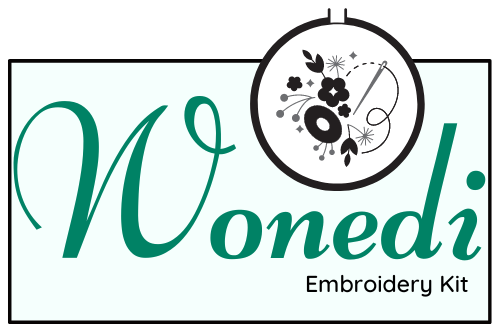Embroidery Kit
Exploring Embroidery Styles: From Traditional to Contemporary Trends
Embroidery, an ancient art form dating back thousands of years, has evolved over time to encompass a vast array of styles and techniques. From its humble beginnings as a means of embellishing garments and household items to its modern-day status as a respected form of artistic expression, embroidery continues to captivate and inspire people around the world. In this blog post, we’ll take a journey through the rich history of embroidery styles, from traditional to contemporary trends.
Traditional Embroidery Styles

Traditional embroidery encompasses a wide range of styles that have been passed down through generations. These styles often reflect the cultural heritage and craftsmanship of specific regions and communities. One of the most well-known traditional embroidery styles is Crewel Embroidery, which originated in England during the Medieval period. Characterized by intricate designs worked in wool on a sturdy fabric such as linen or twill, Crewel Embroidery often features motifs inspired by nature, such as flowers, animals, and foliage.
Another traditional embroidery style with a rich history is Cross-Stitch. Originating in Europe in the Middle Ages, Cross-Stitch involves creating X-shaped stitches to form a pattern or design on fabric. Popular motifs in Cross-Stitch include samplers, floral patterns, and religious symbols. This timeless technique remains popular today, cherished for its simplicity and versatility.
Contemporary Embroidery Trends
While traditional embroidery styles continue to thrive, contemporary trends have also emerged, pushing the boundaries of what is possible with a needle and thread. One such trend is Modern Embroidery, which combines traditional stitching techniques with innovative designs and materials. Modern embroiderers often experiment with bold colors, abstract shapes, and unconventional materials to create striking works of art that challenge traditional notions of embroidery.
Another contemporary trend that has gained popularity in recent years is Sashiko Embroidery. Originating in Japan, Sashiko is a form of decorative stitching traditionally used to reinforce and repair garments. Characterized by its geometric patterns and repetitive stitches, Sashiko has become a beloved embroidery style among contemporary crafters seeking to add texture and visual interest to their projects.

Fusion Embroidery
As embroidery continues to evolve, many artists are exploring the possibilities of fusion embroidery, blending elements of different styles and techniques to create unique and innovative works of art. One example of fusion embroidery is Mixed Media Embroidery, which incorporates embroidery stitches into mixed media artworks that combine fabric, paper, paint, and other materials. This experimental approach allows artists to break free from the constraints of traditional embroidery and explore new avenues of creativity.
Embroidery as a Form of Self-Expression
Regardless of style or technique, embroidery has always been a deeply personal form of expression, allowing artists to convey their thoughts, emotions, and experiences through needle and thread. For many people, embroidery is a meditative practice—a way to slow down, disconnect from the chaos of everyday life, and reconnect with oneself.

In conclusion, embroidery styles have evolved and diversified over the centuries, from traditional techniques passed down through generations to contemporary trends that push the boundaries of what is possible with a needle and thread. Whether you’re drawn to the timeless beauty of traditional embroidery or the cutting-edge creativity of contemporary trends, there’s no denying the enduring appeal of this ancient art form. So pick up a needle, select your favorite thread, and let your creativity soar as you explore the rich tapestry of embroidery styles that the world has to offer.

